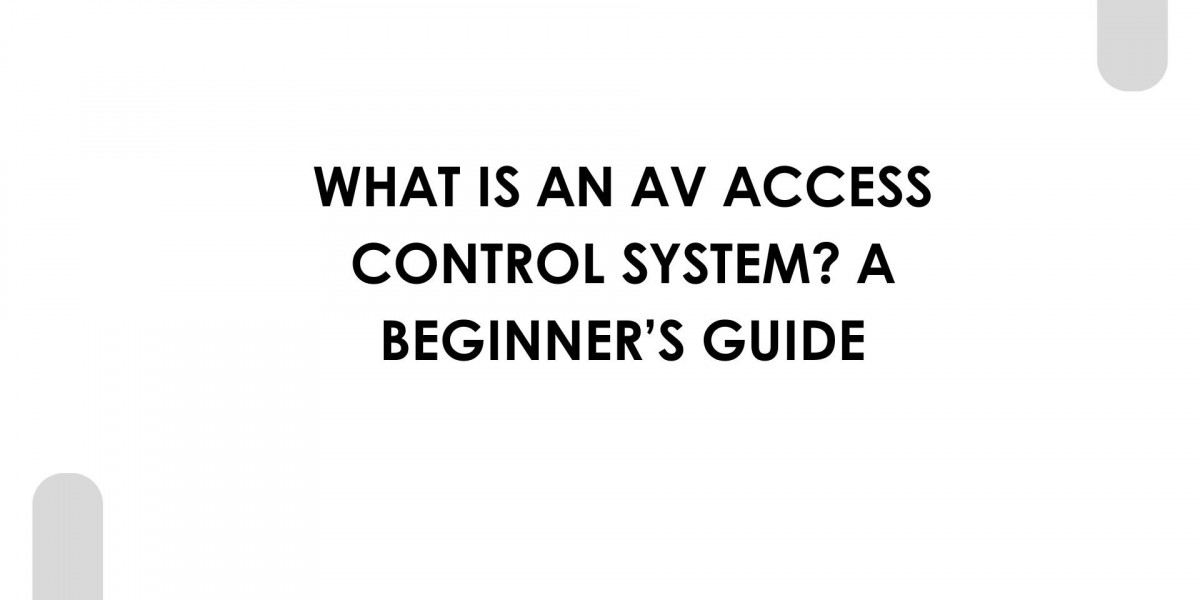Security and convenience have become essential in managing today’s modern buildings, offices, campuses, and commercial spaces. Whether you are running a corporate environment, a university, or a government facility, protecting physical areas and regulating who can access certain zones is a major priority. But there is a growing demand to go one step further—integrating access control with audiovisual systems. This is where an AV Access Control System comes into play.
At XTEN-AV, we help professionals design integrated AV and security systems using intelligent tools. In this beginner’s guide, we will explore what an AV access control system is, how it works, and why it is becoming the new standard in smart building infrastructure.
What Is an AV Access Control System?
An AV Access Control System combines the security of traditional access control—like door entry permissions—with the intelligence of audio visual technologies. This integration allows you not only to control who can enter certain spaces, but also how the environment behaves when someone does.
For example, when a user gains entry to a conference room using their access badge, the system can automatically:
Turn on the room’s display screens
Adjust the lighting and blinds
Activate video conferencing equipment
Launch a pre-set AV scene based on the user profile
In short, an AV access control system links physical access with AV automation, resulting in better workflows, enhanced security, and smarter user experiences.
Traditional Access Control vs AV Access Control
Traditional Access Control Systems focus on locking and unlocking doors based on identity verification. They typically use:
Card readers
Biometric scanners
PIN codes
Mobile credentials
Once access is granted, the system logs the event and allows the door to open.
AV Access Control Systems, however, extend this functionality by integrating with audiovisual components such as:
Displays and projectors
Video conferencing equipment
Audio systems and microphones
Lighting and HVAC control
Room scheduling displays
This fusion allows both security and functionality to work in tandem.
How AV Access Control Systems Work
An AV access control system operates through a combination of hardware and software.
Key components include:
Credential readers: Verify a person’s identity through cards, phones, or biometrics
Access controller: Determines who has permission to enter specific rooms or zones
AV control processor: Triggers pre-programmed actions once access is granted
Integration software: Acts as the bridge between the access system and AV systems like Crestron, AMX, or Q-SYS
Example in action:
An employee uses a mobile credential to enter a video conference room
The access control system verifies permission and unlocks the door
The AV system detects the access event
Lights turn on, displays power up, and the Zoom call begins—all without user interaction
This seamless experience saves time and makes spaces more efficient.
Where Are AV Access Control Systems Used?
1. Corporate Offices
AV access control systems are ideal for executive rooms, huddle spaces, boardrooms, and training centers. They automate the environment and ensure only authorized personnel access sensitive zones.
2. Higher Education
In universities, lecture halls and media labs can use integrated systems to control entry and AV usage based on faculty or student profiles.
3. Government and Military
Sensitive command centers or war rooms require strict access but also have complex AV setups. Integration ensures both are controlled securely.
4. Healthcare
Hospitals can use these systems for operating rooms or diagnostic areas that require secure access and specific AV configurations for medical equipment.
5. Event Venues
Large auditoriums and conference centers can benefit from automated lighting and sound settings when event organizers access their booked spaces.
Benefits of an AV Access Control System
1. Enhanced Efficiency
Automating AV systems based on access events saves time and reduces the need for manual configuration. This improves staff productivity and user satisfaction.
2. Improved Security
Only authorized users can trigger AV functions. This prevents misuse of expensive equipment and protects intellectual property in meeting rooms or classrooms.
3. Personalized Experiences
The system can adapt based on user roles. For instance, a technician might activate all systems for maintenance, while a general user only sees basic functionality.
4. Centralized Management
Facilities teams can manage access rights and AV presets from a single platform. This reduces support calls and ensures consistent operation across multiple rooms or buildings.
5. Cost Savings
Automation reduces energy waste by ensuring AV systems are only active when needed. It also reduces wear and tear from unnecessary usage.
Challenges and Considerations
While powerful, deploying an AV access control system requires proper planning. Here are some considerations:
Compatibility: Not all access systems and AV platforms are designed to work together. Choose open, integratable systems.
Network infrastructure: Both access and AV systems require stable networks for real-time communication.
User privacy: Ensure the system logs and actions follow data protection policies.
Redundancy and backup: Always plan for manual overrides in case of a system failure.
This is where XTEN-AV helps by allowing professionals to design and document access control and AV integration in one place—eliminating surprises during installation.
How XTEN-AV Supports AV Access Control Design
With XTEN-AV, you can:
Design access control zones across rooms and floors
Add AV devices and link them to access events
Choose real-world hardware and software components
Create automated triggers and control sequences
Generate wiring diagrams and installation documents
Whether you are managing a single room or multiple buildings, XTEN-AV makes the process faster, smarter, and more reliable.
Conclusion
An AV Access Control System is more than just a way to open doors. It is the key to unlocking intelligent building automation, saving time, and creating better user experiences.
By integrating access control with AV systems, you ensure security and convenience go hand in hand. Whether you are managing a campus, a corporate office, or a mission-critical command center, this technology gives you control and confidence.
With tools like XTEN-AV, planning these systems becomes simple and scalable—so your projects deliver the performance modern spaces demand.








